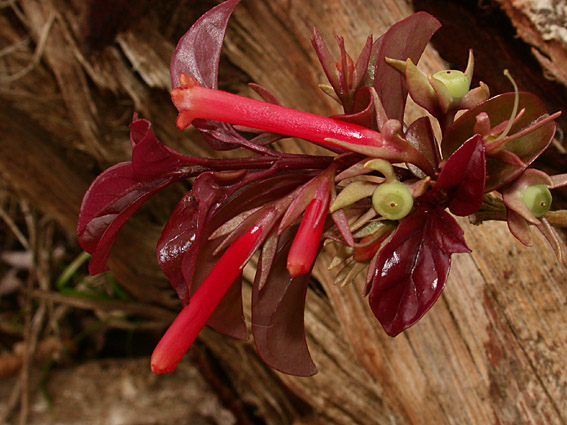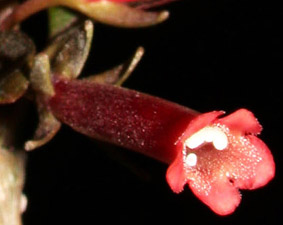 |
QUICK SEARCH
MO PROJECTS:
Africa
Asia/Pacific
Mesoamerica
North America
South America
General Taxonomy
Photo Essays
Training in Latin
America
MO RESEARCH:
Wm. L. Brown Center
Bryology
GIS
Graduate Studies
Research Experiences
for Undergraduates
Imaging Lab
Library
MBG Press
Publications
Climate Change
Catalog Fossil Plants
MO DATABASES:
W³MOST
Image Index
Rare Books
Angiosperm
Phylogeny
Res Botanica
All Databases
INFORMATION:
What's New?
People at MO
Visitor's Guide
Herbarium
Jobs & Fellowships
Symposium
Research Links
Site Map
Search
|
Draft Treatments | Guidelines | Checklist | Citing | Editors The Cutting EdgeVolume X, Number 2, April 2003News and Notes | Recent Treatments | Leaps and Bounds | Germane Literature | Season's Pick SEASON'S PICK: Gibsonionthamnus epiphyticus (Standl.) L. O. Williams
This species is nothing new but since the placement of Gibsoniothamnus among families has been problematic until recently, and since it is a somewhat rare and unusal, often epiphytic plant that flowers during the first quarter of the year, it wins this season's lottery ticket to fame. As noted in Francisco Morales' treatment for the Manual (see Treatments, this issue), this species loses it's leaves early in the dry season and then, just as the new and reddish tinged leaves flush, it also bursts into flower (ca. Feb--May). Its flowers range from about 1.5 to 2.5 cm in length. The photo showing the new leaves with flowers and fruits isof an epiphytic plant, 26 April 2002, from the region of Cerro Turrubares and the close-up of the flower is from a plant collected near Cerro Caraigres, growing on limestone rocks. This latter is growing nicely as a potted plant in Santa Ana where it flowered this year, 11 February. It makes a nice ornamental, almost fitting the bill as a "natural" bonsai. The potted plant did not set fruit. Photos are by B. Hammel. |
© 1995-2025 Missouri Botanical Garden, All Rights Reserved
4344 Shaw Blvd.
St. Louis, MO 63110
(314) 577-5100
Technical Support

